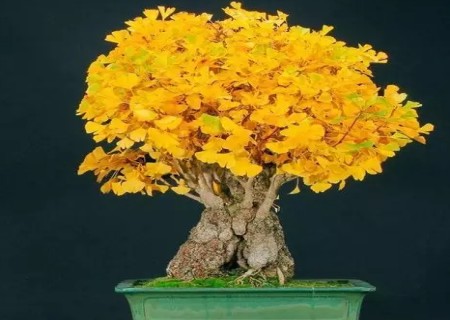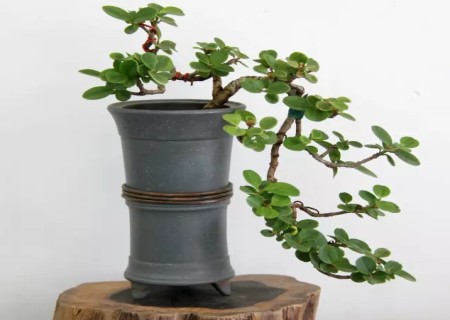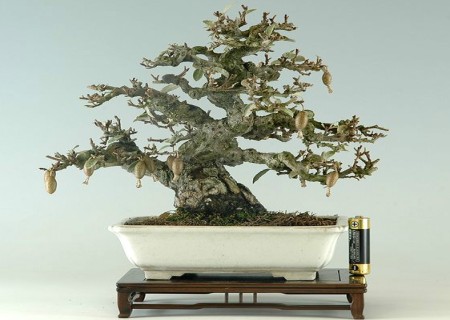How to make ginkgo bonsai
Summer has come, ginkgo biloba presents a green, with a high ornamental value, so ancient and modern Chinese and foreign people often use ginkgo in the courtyard, street trees or landscaping. However, what the editor wants to tell you today is that ginkgo biloba leaves can actually be made into bonsai, which is majestic, luxuriant and dignified, and full of fun, so it has unique artistic value.

So, how to make ginkgo bonsai? The following editor will give you an explanation, hoping to be helpful to ginkgo lovers.
1. Material selection and cultivation
Artificial breeding and mountain excavation can be selected for making ginkgo bonsai. Artificial propagation can use sowing, grafting and other methods to obtain materials, but in order to make bonsai with strange shape and ancient vitality, it is suggested to use the method of digging old piles in the mountains.
We can dig the roots and tillers of the old piles of Ginkgo biloba in the field and cultivate them after treatment. Because there are many raised milk roots at the base of wild old ginkgo trees, we need to separate them from the mother before we cultivate them. When the root system is mature, we will send out new branches and leaves, and then we can process them.
2. the method of potting.
Before making bonsai, the first thing we need to consider is how to pot the old stake of ginkgo biloba. The specific operations are as follows:
1) selection of pots: making ginkgo bonsai is suitable for choosing glazed pottery pots with darker colors. According to the experience of some bonsai masters, bowls of dark blue, dark green, black and dark purple are usually chosen. The shape of the flowerpot is generally round or rectangular in the main body of the pot.
2) prepare soil: after choosing a good pot, we have to consider how to allocate soil to the bonsai. According to the growth habits of ginkgo biloba, it is recommended to choose sandy soil, because this kind of loam is not only fertile but also loose and permeable. Coupled with mature rotten leaf soil and pastoral soil, and can be mixed with a small amount of sand, it can be mixed evenly.
3) planting Ginkgo biloba: the next step is to plant the old piles of ginkgo biloba. Before planting, the bottom of the basin should be spread with a layer of coarse sand, which is not only more conducive to water permeability, but also conducive to plant survival and growth. After that, the plant is implanted in a flowerpot, spread into the previously prepared soil and compacted around the plant. Water once after you are done. Be careful not to damage the root system of Ginkgo biloba when planting.
3. Processing and modeling
After ginkgo biloba is planted, we can trim and reshape it. The time is usually set in early spring in March, and the specific operation methods are as follows:
1) Tree processing: the processing of ginkgo bonsai is mainly aimed at the tree trunk, we can combine pruning and climb it with brown wire or wire. In the summer, we need to climb the newly germinated branches again to promote their formation. As the leaves of ginkgo trees are relatively large, we need to prune some of the excess branches and leaves, and bonsai production requires branches and leaves to be carried out under relatively sparse conditions.
2) after we have finished pruning and processing the tree, then we begin to shape it. Usually for us to choose the modeling types are oblique dry type, horizontal dry type, qu dry type and so on. The ginkgo bonsai made by these modeling methods will be more old and simple. In the modeling process, we can refine the branches and leaves, they can be tied into pieces, or they can be trimmed to make them look more natural.
4. Maintenance and management
After we have finished, according to the growth conditions of Ginkgo biloba, we should put the bonsai of ginkgo biloba in a sunny and well-ventilated place for maintenance and management. In the process of maintenance management, we should pay attention to the following points:
1) in summer, shading measures should be taken in time to avoid direct sunlight and exposure to the plant, which can prevent the inhibition of plant growth or the occurrence of sunburn and sunburn.
2) in addition to normal watering during the growing season, we can also apply a small amount of cake fertilizer or farm manure once a week.
3) for the basin soil, in order to ensure the nutrition of the soil, we can add some sand and bran ash to make it into a high-quality nutrient soil.
4) of course, changing the basin is a necessary link in the process of maintenance and management of ginkgo bonsai. Usually, the basin can be changed every two years, and when you change the basin, you may find that the root system is too long, so we can trim off the overlong root system, and then keep half of the old soil and mix it with half of the new soil. Of course, the basin had better apply some base fertilizer.
Time: 2019-05-26 Click:
- Prev

Production Technology of Poplar Bonsai
Boxwood, also known as sparrow tongue boxwood, pearl boxwood, its tree shape is beautiful, and thick and accompanied by luster, the most important thing is that boxwood is evergreen all the year round, it is a precious material for bonsai production, it can be made into bonsai masterpieces for the world to watch. If the old yellow poplar piles are excavated from the mountains to create bonsai.
- Next

Production technology of Elaeagnus angustifolia bonsai
Elaeagnus mandshurica has a natural tree shape and a drooping red fruit. In addition to hedges made into natural forms on the grasslands, forest edges and the periphery of trees, we can also make them into bonsai for appreciation. However, potted Elaeagnus mandshurica is generally not easy to bear fruit, which is related to the breeding time of the selected species.
Related
- Fuxing push coffee new agricultural production and marketing class: lack of small-scale processing plants
- Jujube rice field leisure farm deep ploughing Yilan for five years to create a space for organic food and play
- Nongyu Farm-A trial of organic papaya for brave women with advanced technology
- Four points for attention in the prevention and control of diseases and insect pests of edible fungi
- How to add nutrient solution to Edible Fungi
- Is there any good way to control edible fungus mites?
- Open Inoculation Technology of Edible Fungi
- Is there any clever way to use fertilizer for edible fungus in winter?
- What agents are used to kill the pathogens of edible fungi in the mushroom shed?
- Rapid drying of Edible Fungi

